The importance of the energy label on monitors to save more
The energy label can be useful when buying a monitor or a TV because it gives us an idea of what consumption we can expect. In the same way, it works for many household appliances and, if you live in Europe, you are interested in knowing how it works.
Without the intention of doing politics, it seems that our leaders only know how to raise the electricity bill as time passes. Faced with problems, solutions, and that is that household appliances consume a lot of electricity, so you have to use the scissors as much as possible. For this reason, we will explain the new energy label established by the European Union.
Index of contents
New energy label from 2021: the A +++ is eliminated
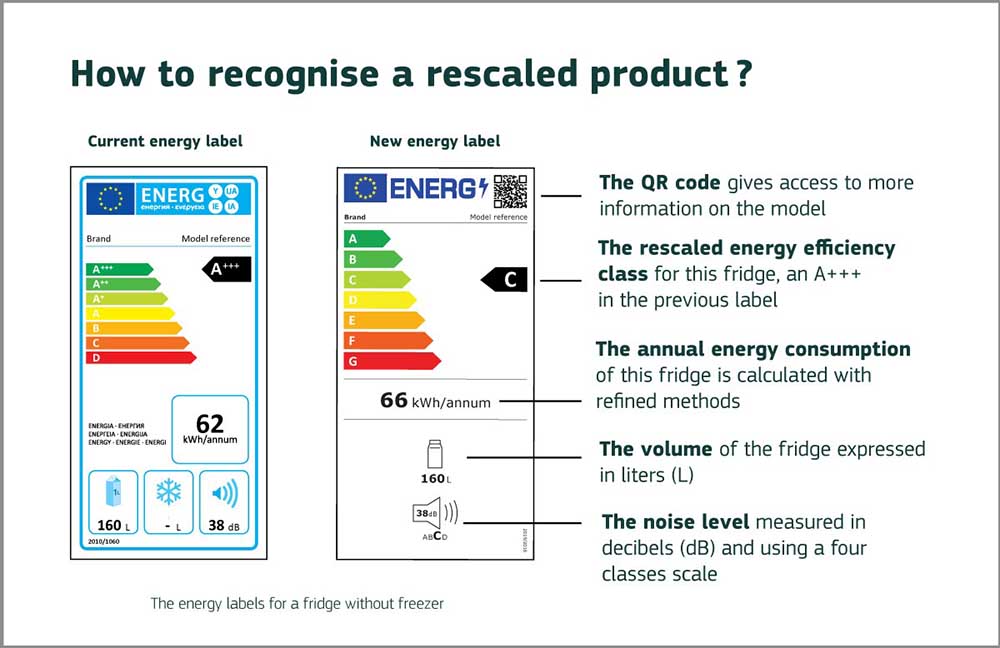
The energy label is a sticker that comes on household appliances whose purpose is to inform about the efficiency of the product. Thus, we have the information necessary to predict what consumption we can expect from the device, something that is interesting in monitors and televisions (in our case).
This label cannot be altered or manipulated because it is regulated by European regulations, so we will see it on products sold in Europe. The products that will carry this label are the following:
- Air conditioning.
- Water heaters.
- Refrigerators.
- Freezers.
- Light bulbs or lamps.
- Ovens
- Washing machines.
- Dryers
- Dishwasher.
- Vitroceramic hobs.
- TVs and screens.
- Heaters
The product is classified according to its efficiency on this scale (from best to worst):

As you can see, the energy label is distributed as follows:
- The name of the manufacturer.
- Model.
- Efficiency rating (black letter on the right).
- Light consumption per year in kWh.
- Kind of product.
- Noise generated in dB.
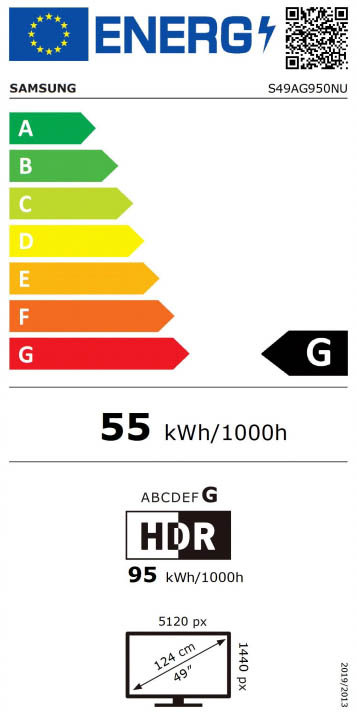
Likewise, we can see some extra information that depends on the type of appliance, and since we are interested in monitors, we will see the consumption in HDR per 1000 hours (or the screen diameter and resolution). This can be very interesting for those monitors or televisions that come with HDR, which can skyrocket consumption.
Why are there so many monitors labeled “F” and “G”?
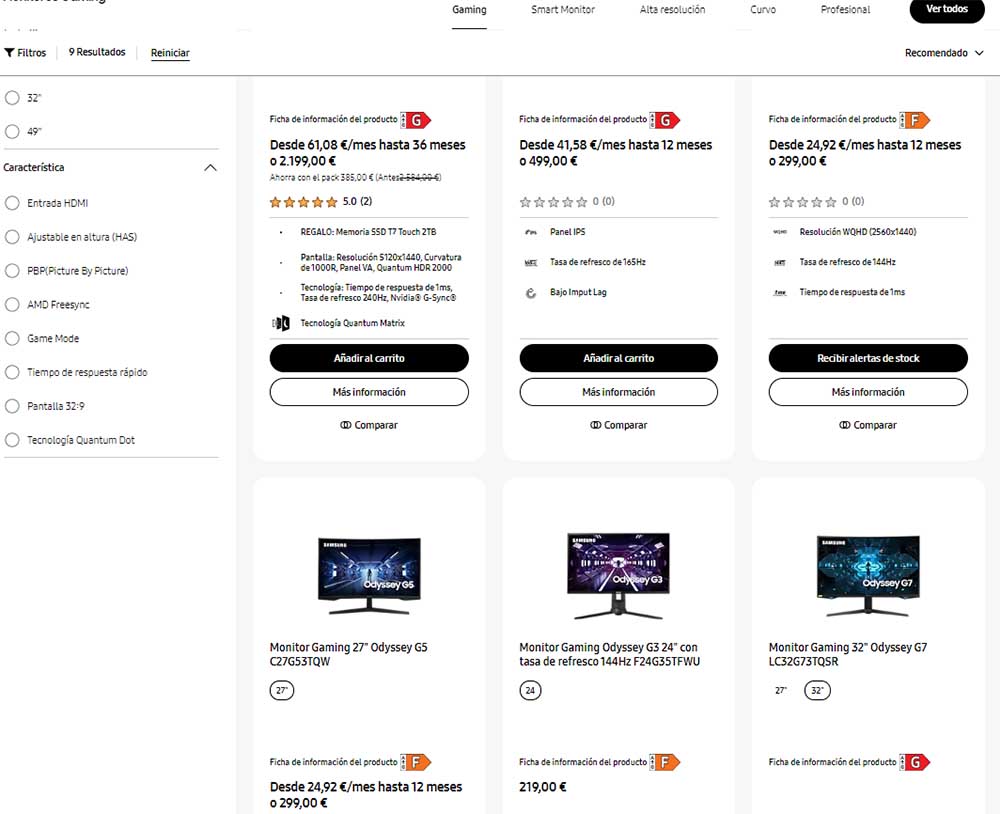
Manufacturers like Samsung , show us the energy labels of their monitors in the store when we go to buy. All of their Odyssey (gaming) monitors have questionable power efficiency , but why?
First of all, because performance is prioritized over efficiency, so the panel in question must have a good refresh rate, a minimum response time and a lot of brightness. This has an energy cost , and, indeed, it is paid for with a rather bad energy label compared to what we see in other appliances.
It is the same with televisions, although another aspect becomes relevant here: the backlighting. In our Edge LED vs FALD comparison , we described what types of backlighting we find on LED LCD panels. In summary, the Edge equip LED bulbs in one area of the panel (the edges or the bottom area), while the FALD have bulbs throughout the panel.
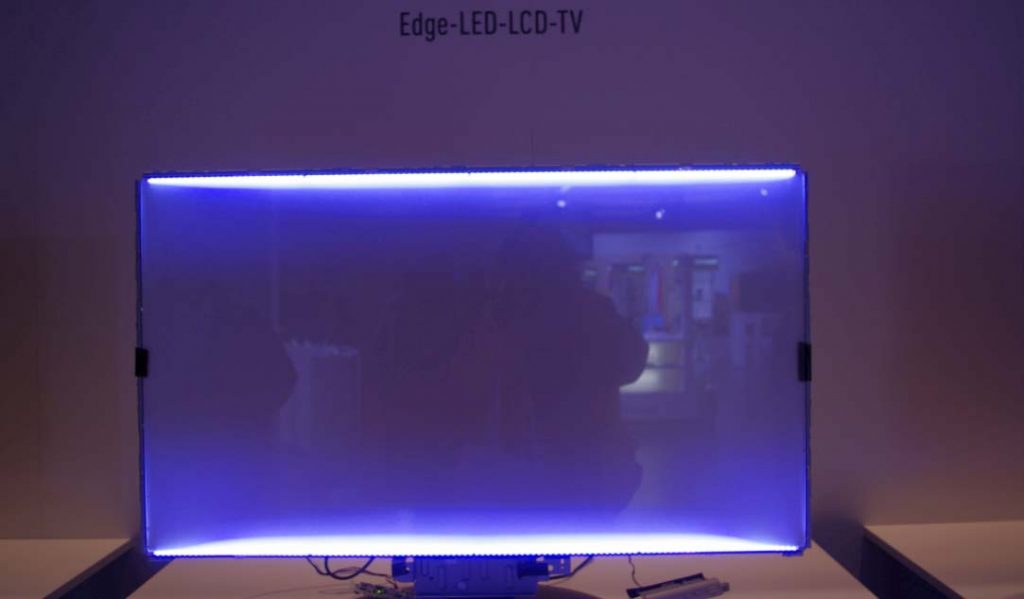
In the end, having more LED bulbs increases the consumption of the panel, so you will rarely see a TV with an LCD panel and FALD backlight with a “good” energy label, but most of them go from “E” to “G”.
So we can determine that the aspects that affect having a more or less favorable energy label are:
- Panel type.
- Panel size.
- Panel backlight.
- Brightness.
- Refresh rate and response time.
- HDR.
- Bringing built-in speakers.
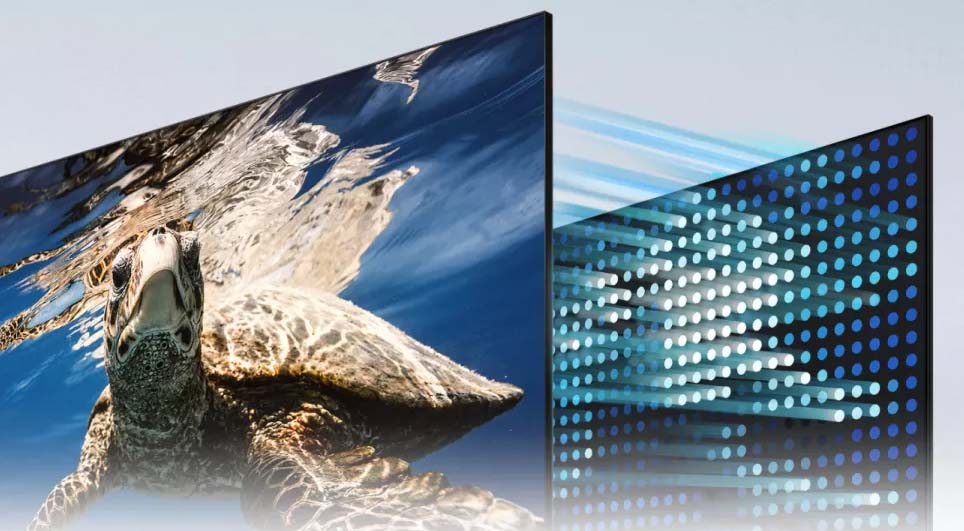
In fact, OLED televisions also have a “bad” energy label, but you have to understand that they start from 55 inches, so it is normal that in those sizes the label is “F” or “G”. On the other hand, we’ve seen a lot of low-end monitors with the same labels and they were mere Edge LED LCDs .
Going back to monitors, finding models with an ” A ” or ” B ” energy label is almost impossible. Inside the “C” label, there are many Dell, HP and some Lenovo, but they are options with less than 24 inches and for general purposes. From the “D” we do find many options (about 24 models in PcComponentes ) of all brands: from 17 to 27 inches.
The reality is that most monitors come with E , F and G labels , so no this peripheral is not a product that manufacturers repair their consumption, but why? Basically, because a monitor does not consume as much energy, as we will see below.
Do monitors / televisions consume that much?
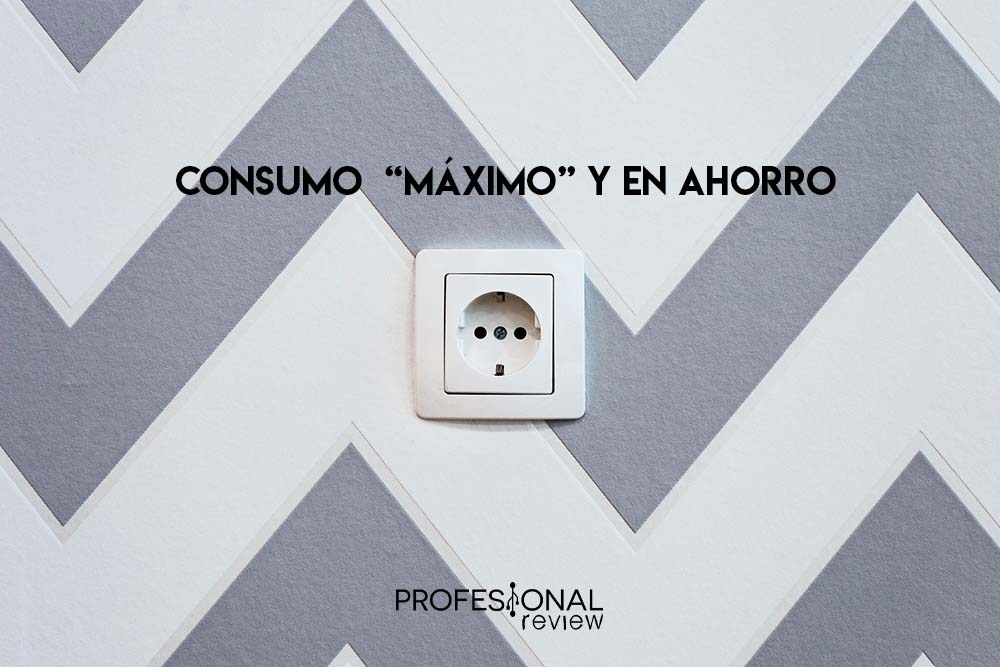
Normally, we see the consumption of the monitor expressed in the technical sheet, and if you want to make real calculations, we advise you to observe it. To give you truthful and transparent information, we have gone to the best-selling monitors in PcComponentes, filtering by size.
- 21.5 inches . This is a used size for general purposes because it strikes the balance between low cost and functionality. There are models of Dell labeled “C” consuming 13 W (very little), while most move by 20 W . If it exceeds 30 W, we advise you to look for another one because it is not efficient at all.
- 24 inches with 144 Hz (or more) and 1 ms response. It is the Full HD gaming option par excellence, so this configuration is highly sought after among users. We have seen consumption ranges from 35 W to 65 W, 65 W being too because most ranging between 35 and 45 W . We have compared ASUS, LG, BenQ, Acer and Samsung monitors for this.
- 27 inches. We found models that consume 22 W and that come with 1080p resolution, there are even some Philips that offer a ” C ” label (15.4 W). When we raise the resolution to 1440p, the consumption does not go up uniformly in all the models, so I understand that it does not depend on the resolution, but on the panel. Let’s say these consume more than the normal 24-inch ones, but there is little difference.
- 27 inches with 144 Hz (or more), 1 ms and 1440p resolution. This is another highly sought after configuration, so we have ‘scrutinized’ to see where we are. Labels “G” abound in this configuration, which consumes between 30 and 65 watts . Manufacturers express 2 quantities:
-
-
- Saving mode
- Maximum power consumption.
-
-
As an advice, pay attention to the “maximum” because the saving mode I doubt that you will activate it if you want to use the 144 Hz, the maximum resolution and the minimum response time. Yes it is true that it has its utility when we do not play, and the difference that we see between the saving and the maximum is brutal, 20 W of difference or more!
Conclusions
For your peace of mind, the energy label is useful , but it is more useful to know the consumption in savings and in “maximum ” of the monitor or television . This will help you get more realistic calculations because the energy label illustrates the annual energy consumption. And is that many people have 2 homes (one for summer and another throughout the year), so the monitor will not turn on for 12 months without ceasing.
For companies, annual consumption is more useful because it operates 12 months of the year, except for exceptions. The resolution of the monitor does not accept consumption, but it will be the panel and its characteristics that determine it. In addition, the fact that it incorporates speakers will mean adding 6 W (more or less) more to the total figure, so if you want to save as much as possible, dispense with them.



